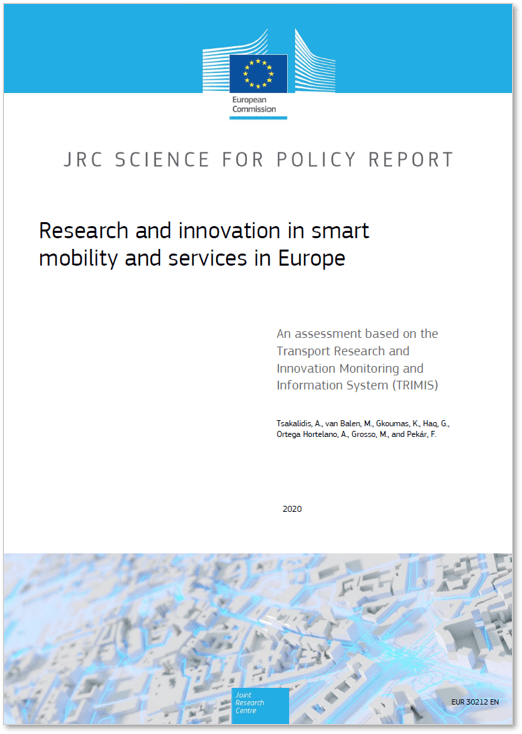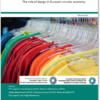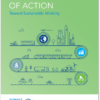
Research and innovation in smart mobility and services in Europe (JRC Science for Policy Report)
The report presents a comprehensive analysis of research and innovation (R&I) in smart mobility and services in Europe in the last years, focusing on European Union (EU) funded projects. It identifies progress in several thematic fields and technologies. It also highlights the relevant policy context and the market activities both in Europe and outside.
Policy context
In May 2017, the European Commission (EC) adopted the Strategic Transport Research and Innovation Agenda (STRIA) as part of the ‘Europe on the Move’ package (European Commission, 2017a), which highlights key transport R&I areas and priorities for clean, connected and competitive mobility. STRIA includes seven roadmaps on seven transport priority areas aiming at a more integrated and effective transport system across Europe and to make better use of innovation and new technology in transport. The STRIA roadmap for Smart Mobility and Services focuses on the assessment of emerging smart technologies and the impacts of such technologies on transport and mobility systems and services.
Smart mobility systems and services have the potential to contribute to the decarbonisation of the European transport sector. A critical link exists between new technologies, services and transport decarbonisation. However, policy and innovation efforts have focused on small changes to improve car technology rather than on integrated transport and mobility strategies. Breaking this path-dependency remains a key innovation challenge. Future transport and mobility services will need to be part of smart and sustainable city strategies to improve urban resource efficiency, decarbonisation and ensure an integrated transport system.
New mobility and transport services and systems are being created due to developments in Information and Communication Technologies (ICT)-enabled web, mobile and big data applications. Traditional automotive, public and private transport models are being challenged as new players emerge with disruptive services; blurring traditional demarcations between public transport and private mobility, including in the area of urban logistics.
In October 2019, the European Commission published the second, updated version of the STRIA roadmap on smart mobility and services, which builds on the 2017 roadmap and further develops the research and innovation strategy, in close cooperation with EU member states and industry stakeholders. The Commission will adopt a strategy for sustainable and smart mobility in 2020 that will address this challenge and tackle all emission sources.
Considering the above, the analyses included in this report are based on the targets and proposed actions set in the latest version of the roadmap and aim to support the further development of the roadmap by assessing research carried out in the specific area. The analysis identifies the current state of play and describes developments that future R&I initiatives should consider. The analysis is based on the European Commission’s Transport Research and Innovation Monitoring and Information System (TRIMIS).
Key conclusions
Focusing on selected EU funded projects starting from 2012 onwards, this report presents a comprehensive analysis of R&I on smart mobility and services in Europe in the last years. The report identifies relevant researched technologies and their development phase and highlights the relevant policy context and the market activities both in Europe and outside.
Altogether, this report provides a comprehensive and up-to-date review of smart mobility and services (SMO) R&I across Europe. Although with limitations (more notably, the lack of Member State (MS) projects in the assessment), findings and insights into the current R&I status and future needs, help the STRIA Working Groups (WG) to better identify R&I activities and provides valuable information to SMO stakeholders.
Main findings
Under the 7th Framewrork Programme for Research (FP7) and the Horizon 2020 Framework Programme for Research and Innovation (H2020) about €1 bn has been invested in SMO research projects. This includes €870 m of EU funds and about €130 m of own contributions by beneficiary organisations.
A total of 1,621 unique organisations participated in FP7 and/or H2020 projects on SMO. The vast majority of the organisations involved focus on more than one transport mode, and all of them include multimodality in their activities. Multimodal applications are the most popular followed by road transport. Rail, air and water transport have much less instances compared to the two main ones.
In many projects a large number of organisations from various countries participate. Italy is the largest beneficiary in absolute terms, followed by Germany. Even though an imbalance exists between the various countries in terms of SMO research, it does appear to be less profound when compared to the other STRIA roadmaps.
Spending on SMO research under H2020 peaked in the first quarter of 2018. Multimodal transport received the greatest interest, while waterborne transport receives the smallest amount of funds for SMO research amongst all modes.
From a text analysis on scientific research from the Scopus database, the number of publications on SMO in general has an increasing trend from year to year, with documents related to the term “smart mobility” rising from only 1 in 2010 to 150 and 127 in 2018 and 2019 respectively. Interestingly, the term “smart mobility” is mostly used in Europe (7 out of 10 countries are in the EU, with Italy being the dominant one). “Mobility as a service” is an area of research related to urban mobility and that has been trending in the last five years peaking in 2018 and 2019 with the United States (US) appearing by far the first in terms of publications, followed by Germany and the United Kingdom (UK) from Europe. The US, China and large EU countries generally occupy the first places in terms of Small and Medium Enterprise (SME)-related scientific publications. A notable case that should be highlighted is the domain of urban air (drone) mobility where the EU presence is minimal, and the US is clearly leading. On the upside, European countries are leading in the domains of soft or active mobility and the concept of living labs. Both urban air (drone) mobility and living labs are trending areas with a low number of outputs that offer opportunity for research.
The technology analysis highlights clusters that are researched in Framework Programmes (FPs) at different development phases. The concept of development phase as an indication of technology maturity has been consolidated in the TRIMIS assessment methodology and is widely used in this report. Three of the top-10 technologies have been researched over the entire development phase in FPs. E-ticketing scheme has been researched only at a research phase, something indicative of the (still) low maturity of these technologies. This is also the case for the mobility services open platform concept researched at research and validation phase. Communication (COMM) network for intelligent mobility, evidence-based road safety research, EcoDrive app, Mobility as a Service (MaaS) model, and car-sharing platform have been also researched significantly in implementation projects.
Among the top-20 technologies, 12 are linked to road transport, 6 to multimodal transport, 1 to aviation (personal aerial transportation systems), 1 to rail (track side train presence alert) and 1 to waterborne transport (E-freight systems). Communication network for intelligent mobility has received the highest funding: almost half of it (€45 m) through two large scale H2020 projects.






Research and innovation in smart mobility and services in Europe (JRC Science for Policy Report) 0 reviews
Login to Write Your ReviewThere are no reviews yet.